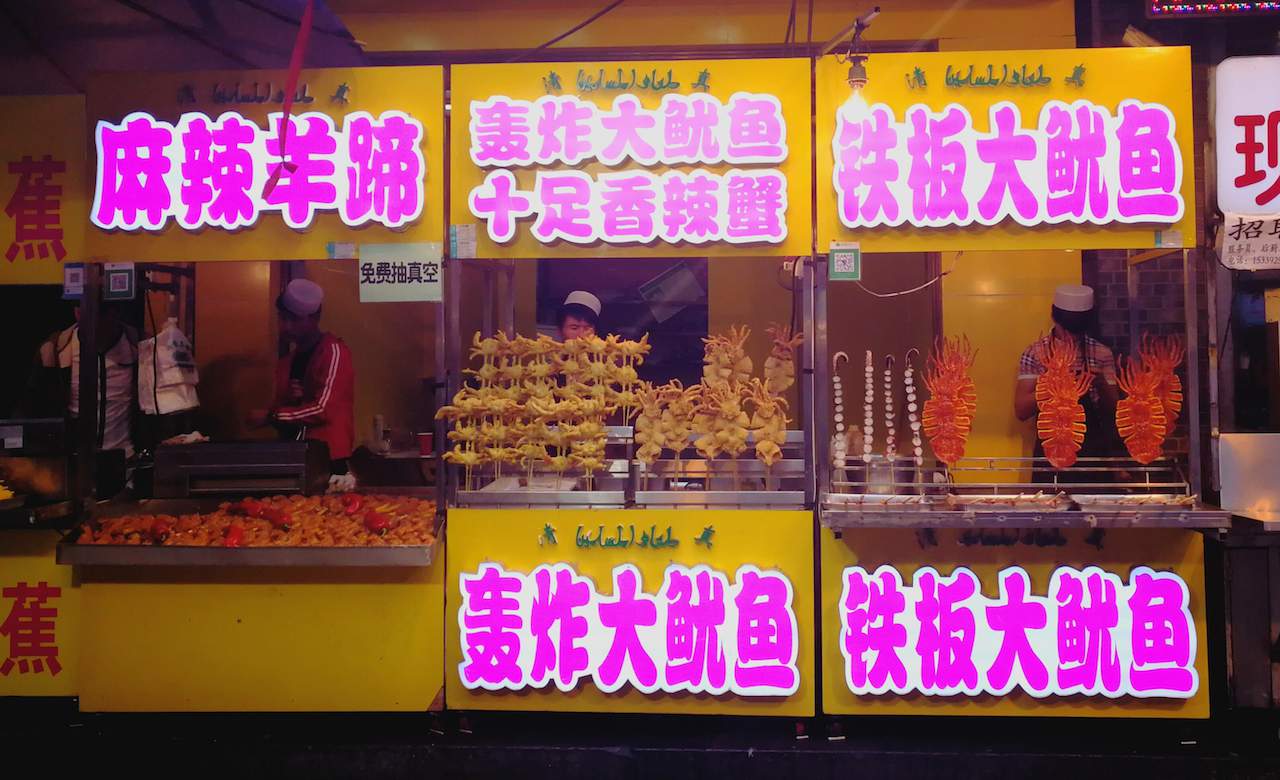Forget about chicken balls, spring rolls and sweet and sour chicken. China has so much more to offer when it comes to Chinese food.
You’ll experience everything from the humble noodle to the volcanic Chinese hotpot. There are dumplings to die for and some wonderfully bizarre concoctions that often (although admittedly not always) turn out to be delicious.
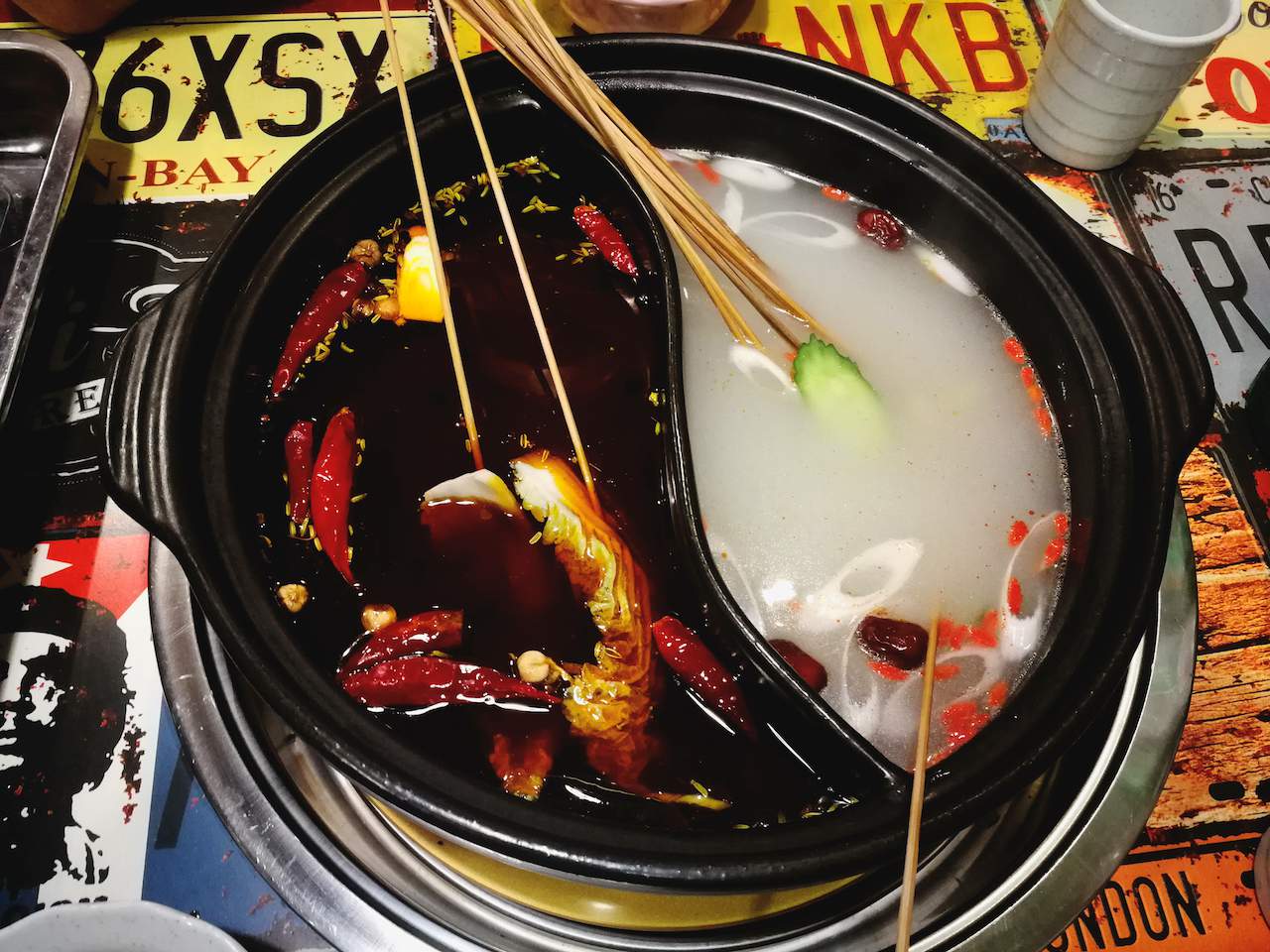
Chinese Hot Pot (c) Lucy Woods
So prepare your tastebuds and follow my top tips on how to make the most of your culinary adventure in China, and how to avoid some of the classic mishaps (duck heads anyone?)
Research is key
If you can’t read Chinese or speak the language, China can be difficult to navigate, even in big cities like Beijing. There are few signs in English and Google Maps is banned here. As a foreign traveller it can also be tricky to access the internet when out and about, as you need to input a Chinese mobile number when signing up for free WiFi.
Therefore it’s a good idea to research some restaurants from each place you are travelling to, and to mark their location on a physical map. Most hotels and hostels (in the main cities at least) will provide free maps, and they can also advise you on their favourite local eateries. Guidebooks can also be a useful reference, but only if they are very up to date. We found that many of the restaurants in our guidebook had closed down, or moved to a different location.
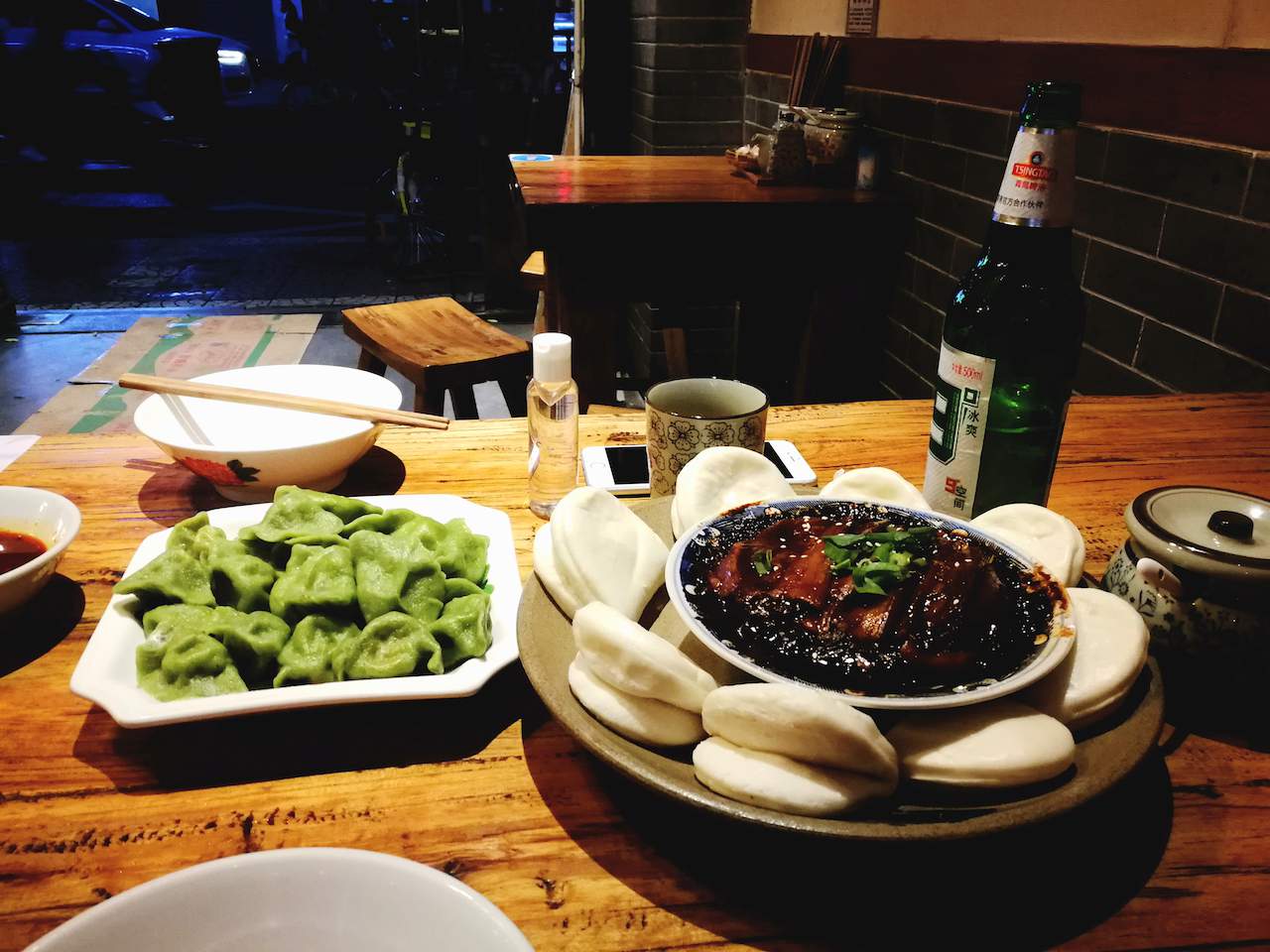
Spinach dumplings and pork belly in Xi’an (c) Lucy Woods
Also, don’t be afraid to channel your inner explorer and discover the best restaurants in town for yourself. Look out for places bustling with customers, as the food is likely to be good. If the restaurant has a speciality, then go for that – in one restaurant in Xi’an our waitress ordered for us and we were presented with some scrumptious spinach dumplings and pork belly with steamed buns.
Remember to follow your instincts – if you get a bad feeling, it’s best to turn away and find somewhere else.
You may also enjoy reading:
- Top 10 things to see and do in Shanghai
- China In 10 Minutes – a short travel/cultural guide book for first time visitors
The bamboozlement of Chinese menus
Finding a restaurant is just one of many challenges you’ll encounter on your culinary quest. Once comfortably seated, you’ll likely be presented with a menu detailing a selection of delicious delicacies – however English translations are few are far between. There might be pictures, but they’re often poor quality and it’s quite hard to distinguish between a plate of crispy beef and a mountain of tripe.
You have several options: you can simply point and hope for the best, although this is a brave choice unless you have a stomach of steel. The better option is to ask for the restaurant speciality – if you’re struggling to communicate, simply point at the menu and shrug in a confused manner. Either they will look at you blankly or recommend some dishes for you.
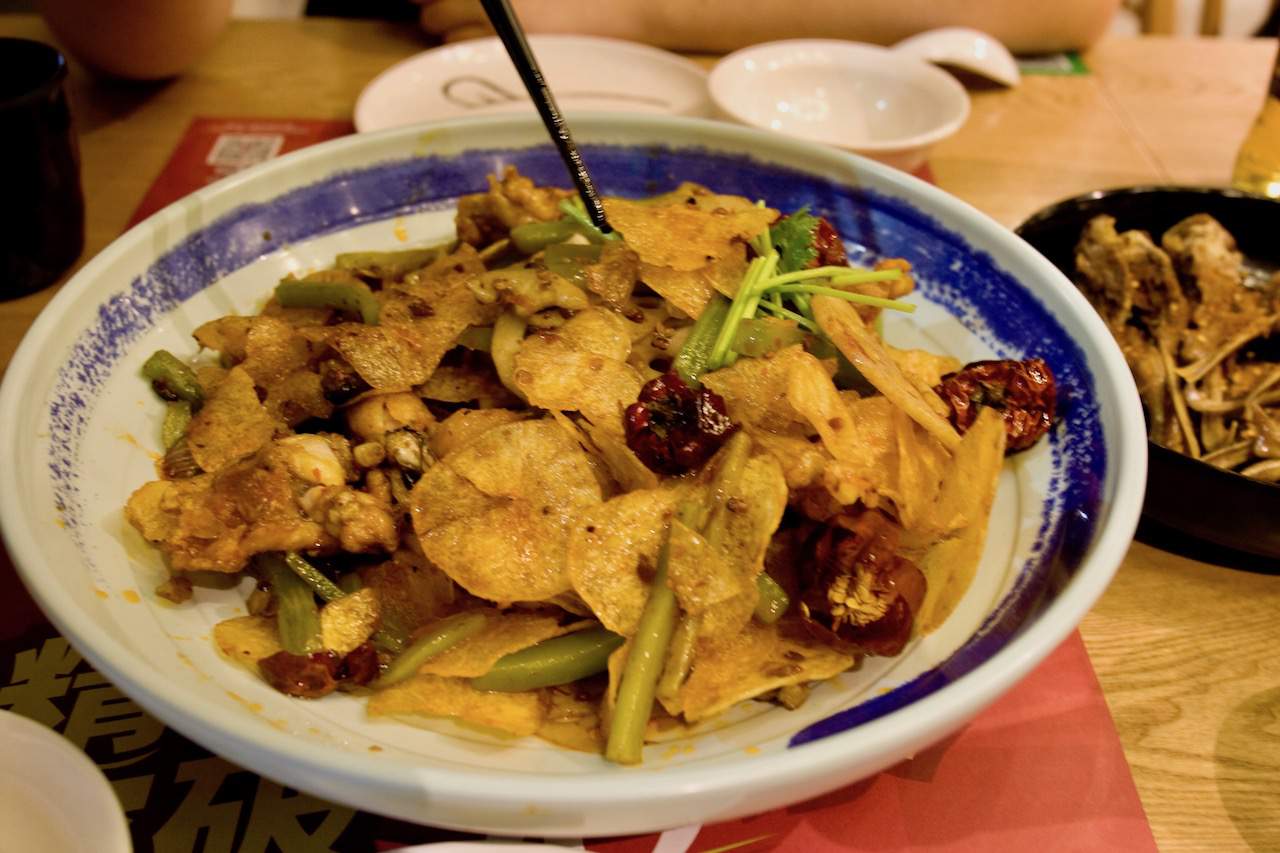
Deep fried bullfrog with a side of duck heads (c) Andrew Moss
You can also attempt to translate the menu using the nifty Google Translate tool. However the translations are often fairly nonsensical, especially as dishes often have names like “The chicken has no sexual experience”. In one Sichuan restaurant, we thought we were ordering roast duck and deep fried chicken – we only found out later that we had in fact gorged on duck heads and deep fried bullfrog.
These mishaps are part of the fun and you may even discover a taste for “virgin urine eggs” (unfortunately literal) or chicken intestine pancakes.
Offal is everywhere
Speaking of intestines, you’ll learn pretty quickly that offal is a huge part of Chinese cuisine. There’s a saying that Chinese people will eat anything with four legs except a table, and I have to admit there is some truth in this. Nothing is wasted and slimy entrails are transformed into an incredible selection of dishes.
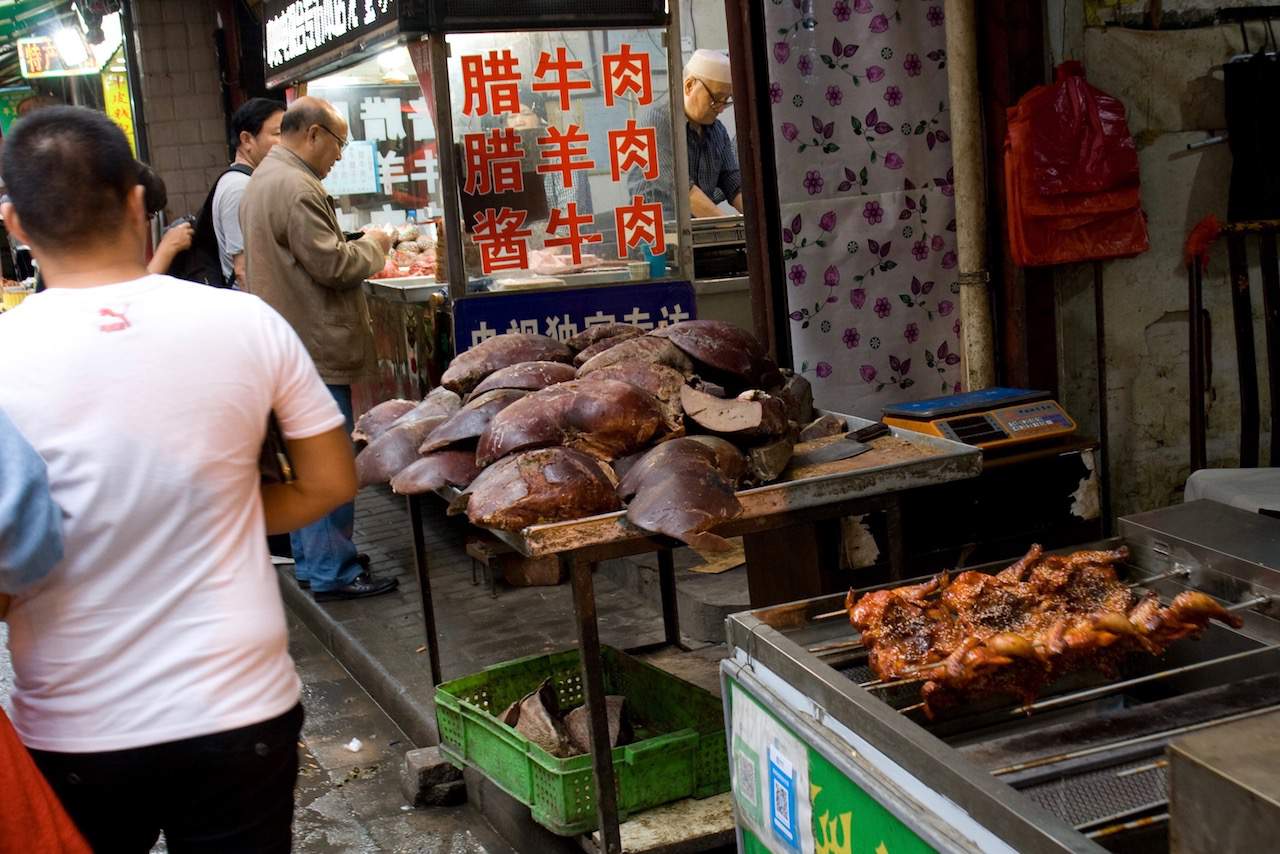
Offal for sale at the Muslim market in Xi’an (c) Andrew Moss
Put your prejudices aside and sample at least one dish with offal while in China. We recommend a visit to one of the many “cook-it-yourself” hot pot restaurants. Simply head to the self-service area, browse the selection of meat and vegetable skewers, and take your pick. Try the liver or tripe skewers – you can cook them yourself and the chilli will mask any unwelcome flavours.
Sample the local specialities
There are five distinct flavours in Chinese cooking: sweet, sour, salty, spicy and bitter. These flavours are used in different degrees depending on the region, and feature prominently in local specialities. For example Beijing cuisine often incorporates sweet elements, and these flavours are prominent in dishes such as Peking duck and Jingjiang Rousi (slices of pork cooked in a sweet bean sauce served with soya bean wraps).
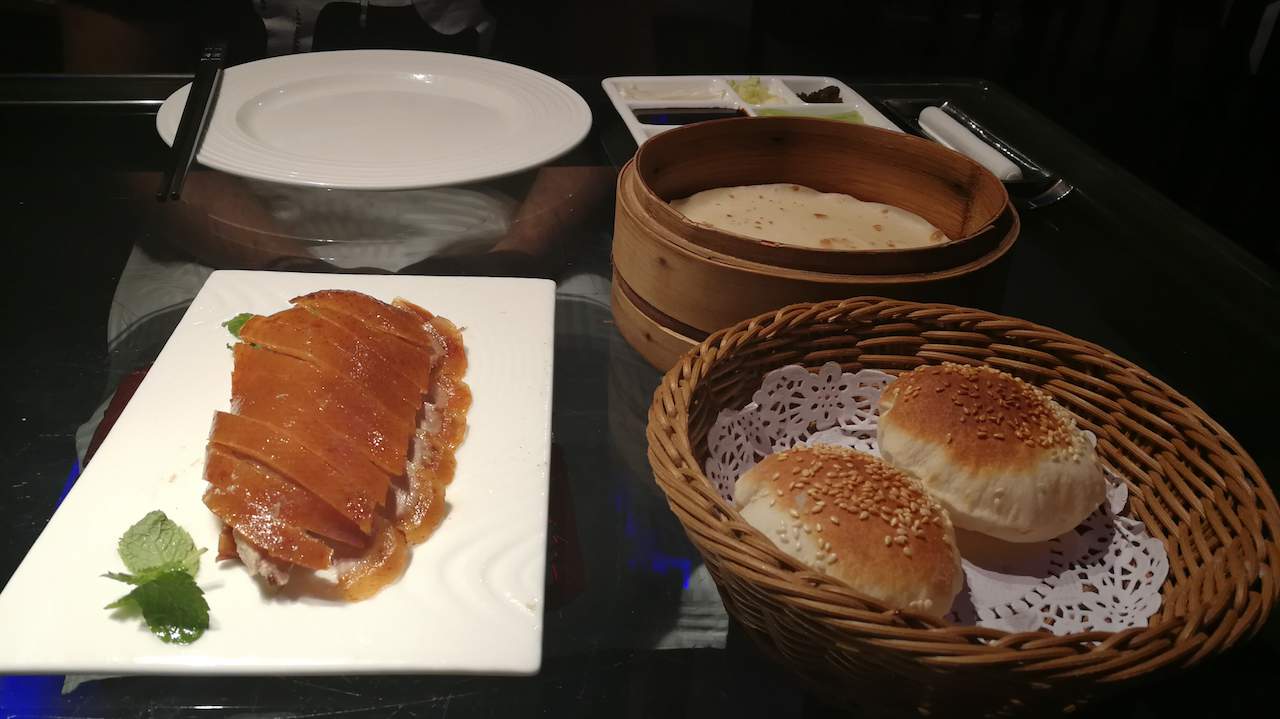
Peking duck (c) Lucy Woods
Ask around and find out what the locals love to eat, and try it yourself. If you’re not sure where to start, find out if there are any English-speaking food tours in the region. We chose UnTour in Shanghai and spent four glorious hours sampling a spectacular selection of Shanghainese cuisine including Xiao Long Bao (soup dumplings), lamb kebabs, crawfish and even Chinese water snake
Fact File
Our favourite food picks:
- Beijing: Peking duck, Tudou Si (shredded potato).
- Shanghai: Xiao Long Bao, braised eggplant, grilled oysters.
- Xi’an: hot pot, Yangrou Paomo (flatbread in mutton soup).
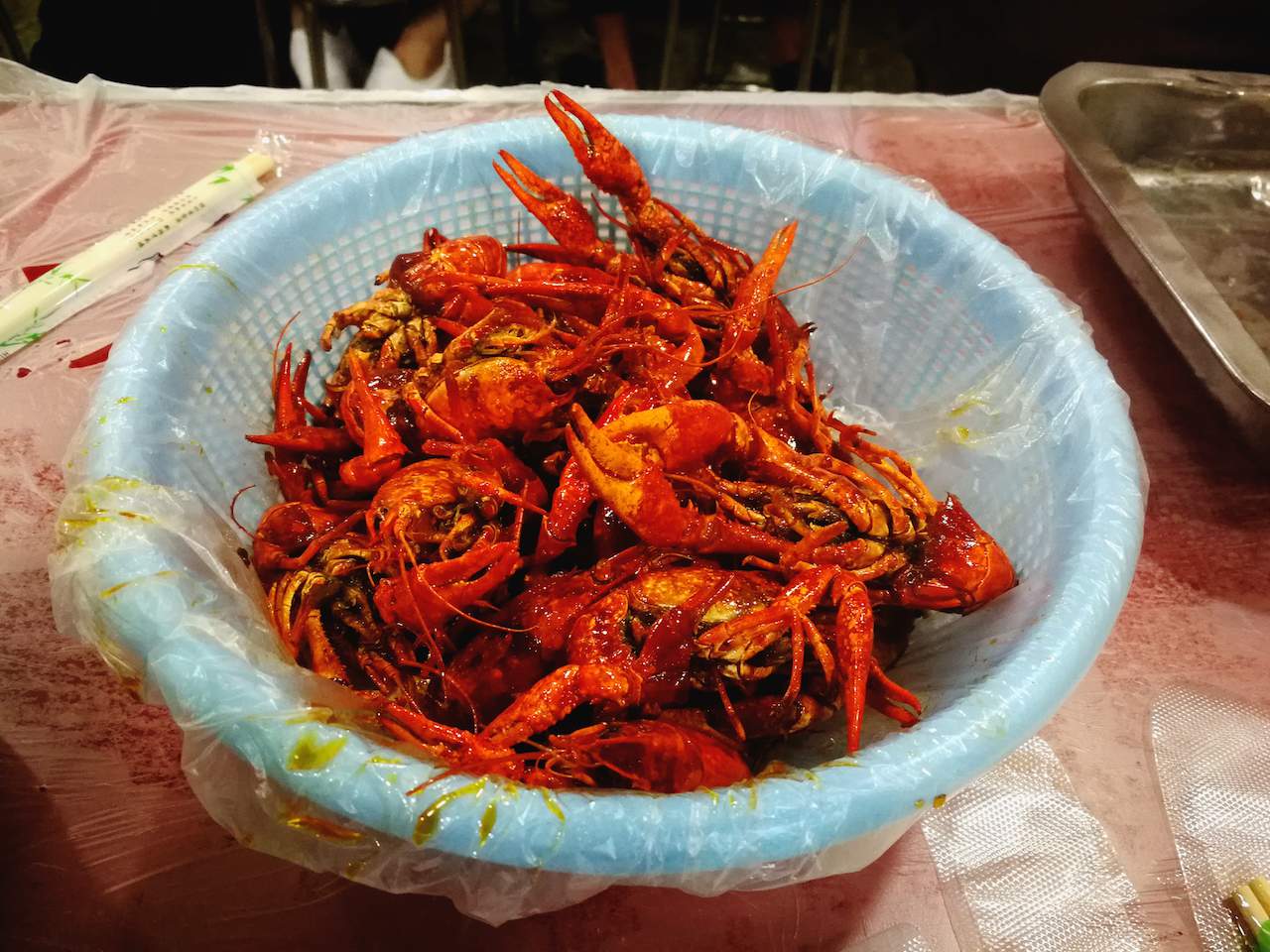
Shanghai crawfish (c) Lucy Woods
Favourite restaurants:
- Beijing: Xiulan Xiaoguan for Peking duck (very good value for the quality).
- Shanghai: Linlongfang for Xiao Long Bao and Lele Xinjiang Restaurant for lamb kebabs.
- Xi’an: Muslim market for Yangrou Paomo.
Download before you travel: Google Translate and MAPS.ME (an alternative to Google Maps – only some restaurants are highlighted on the App).
This article is based on my experiences of travelling in Beijing, Xi’an and Shanghai. We’d love to hear about your foodie tips and interesting culinary experiences while travelling to other parts of China. Leave a comment

